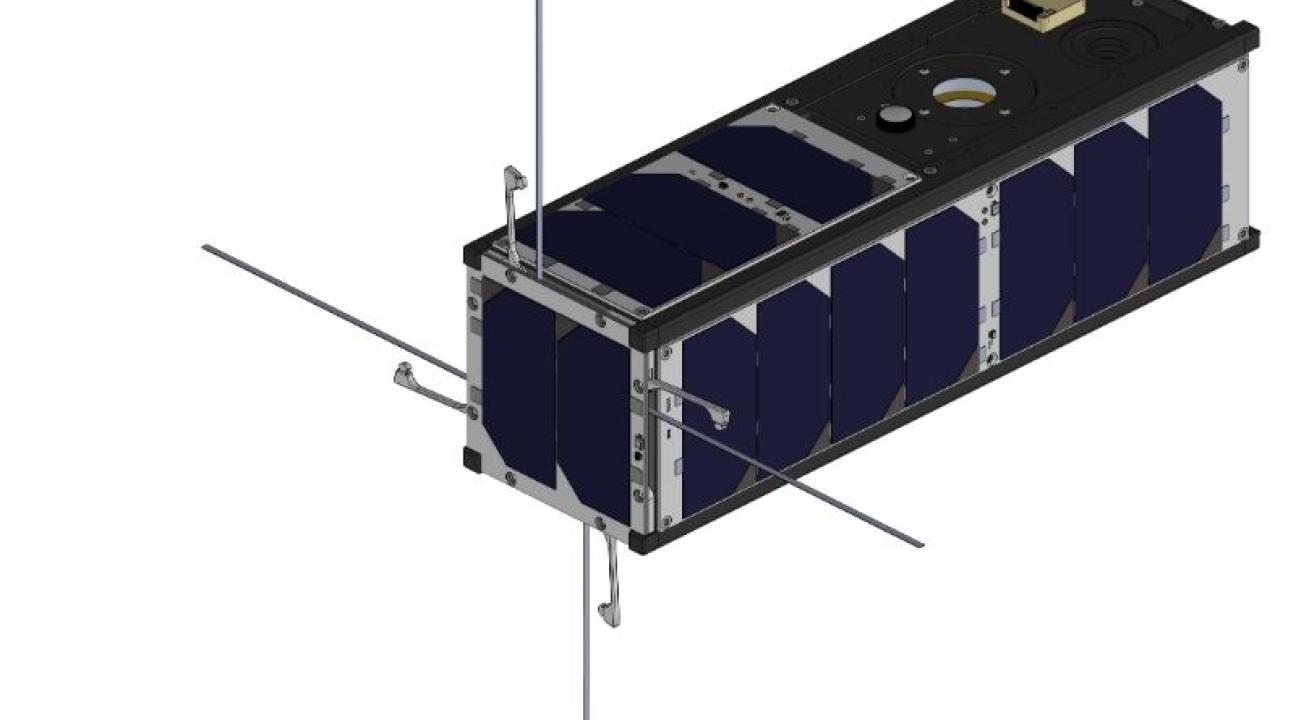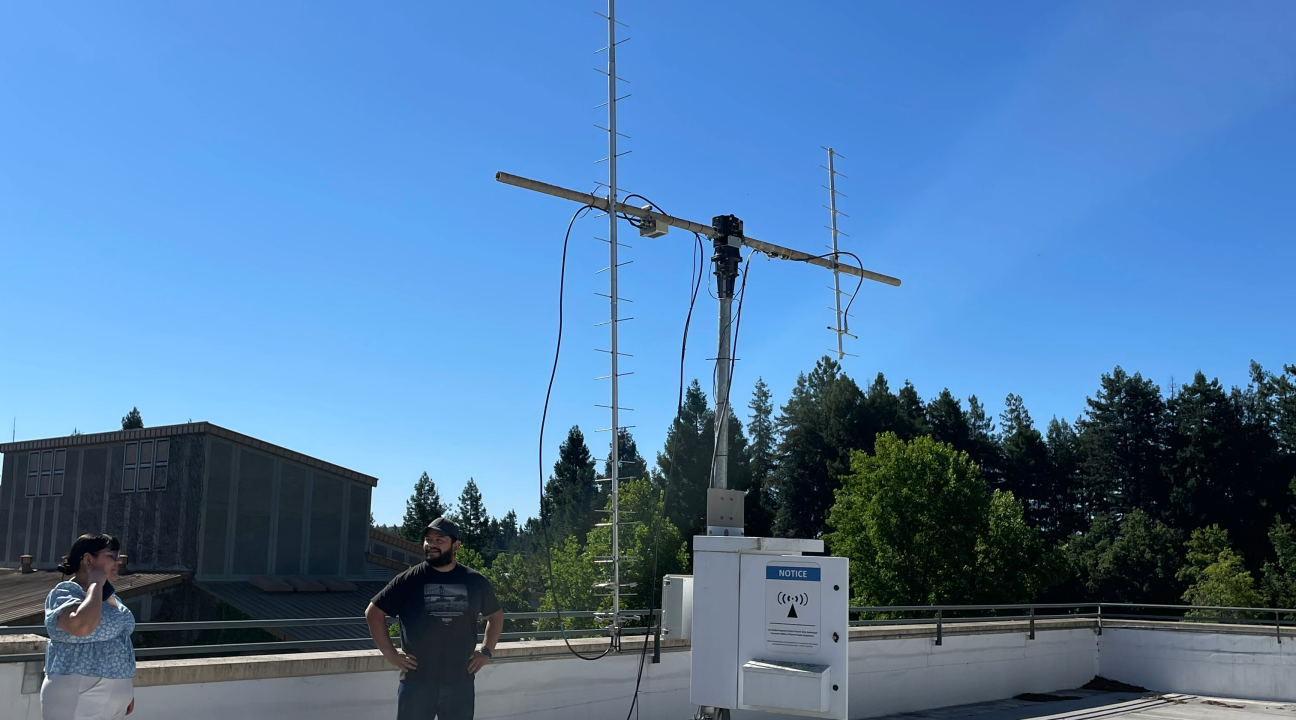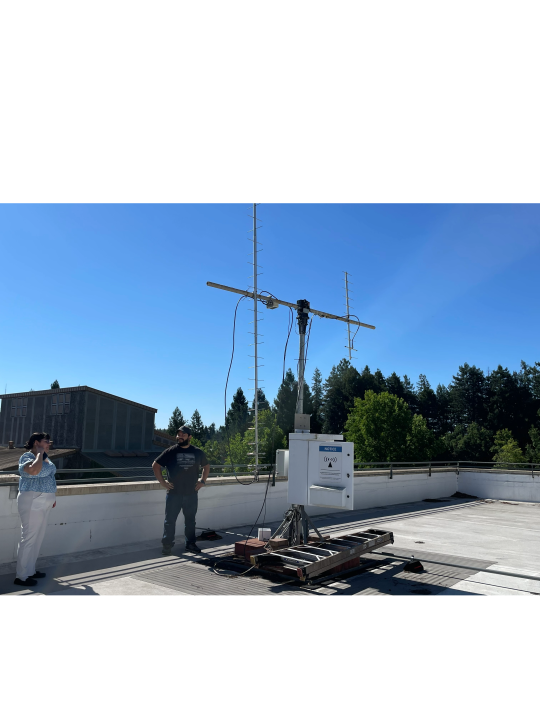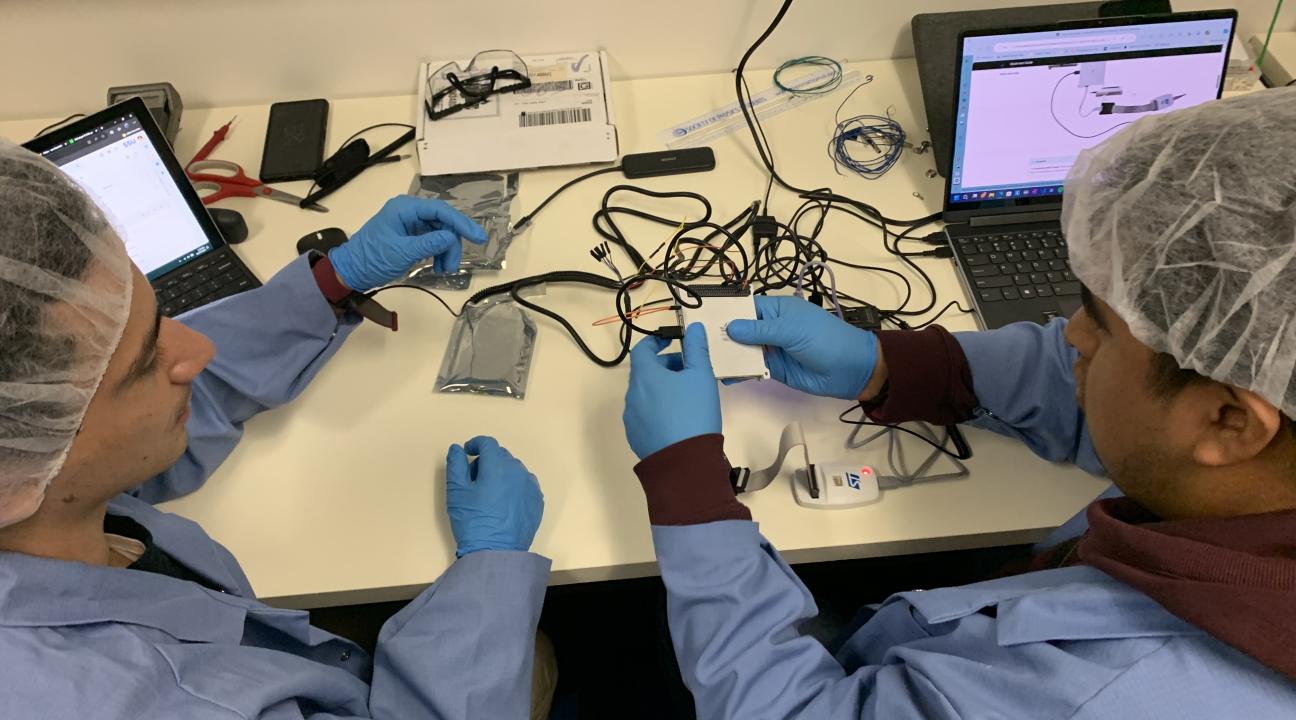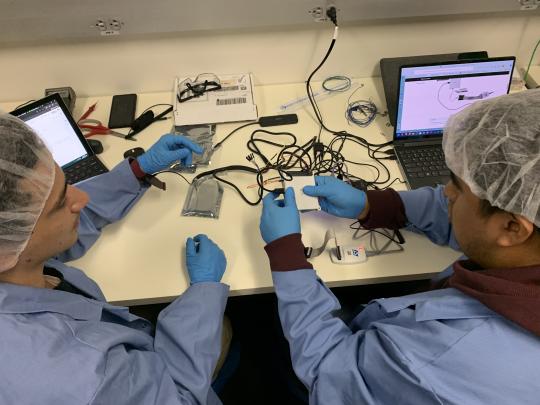Students’ satellite will blast into space, collect data for NASA’s IMAP mission
CubeSat built by undergraduates will study space weather
UPDATE, 11 a.m. Friday, November 28 -- CubeSat successfully launched into space from Space Force Base Vandenburg at approximately 10:44 a.m. today. Sonoma State and its partner universities hope to begin tracking data transmitted from the satellite later today.
A multidisciplinary team of undergraduate students from three different universities, including Sonoma State University, has designed and built a mini satellite, known as a CubeSat, that will launch into space to gather data in collaboration with NASA’s Interstellar Mapping and Acceleration Probe (IMAP) mission.
The small-but-mighty satellite is set to launch on a rocket from Vandenberg Space Force Base in California no earlier than 10:19 a.m. PST Monday, November 10, 2025. A watch party and webinar presentation will begin at 9:30 a.m. Monday in the Sonoma Valley Room of Sonoma State’s Student Center.
The small satellite, a CubeSat, is one of dozens that will be carried on the rocket. The CubeSat will head to the outer reaches of the atmosphere to study how the solar wind interacts with the upper atmosphere in the polar regions. Solar wind storms can cause the atmosphere to expand, causing additional drag on satellites that cause them to deorbit earlier than expected. Understanding the solar wind helps scientists in their quest to improve space weather forecasting and better protect technology in space and on Earth – such as communication networks, power grids, and GPS – from potentially damaging large solar flare events.
The team of 70 undergraduate students from Sonoma State University (SSU), the University of New Hampshire (UNH), and Howard University (HU) designed, developed and built the satellite, which was named 3UCubed – reflecting the overall concept of uplifting undergraduate students to study upwelling, and giving a nod to the three participating universities. Students came from a variety of disciplines, including engineering, computer science, physics, and others.
Launched following its selection as part of NASA’s CubeSat Launch Initiative, the satellite will travel to the Earth’s upper atmosphere, known as thermosphere, which is the same region where many other satellites and the International Space Station orbit around Earth. It will take measurements of the atmosphere density (single oxygen at this altitude) and electron precipitation from space onto the upper atmosphere. Data from the mission will be collected by the students and analyzed in combination with data from IMAP and will help advance the understanding of how the thermosphere in the auroral and cusp regions responds to particle precipitation and varying conditions associated with solar wind.
CubeSats are a specific subset of satellites that are small and standardized and provide a cost-effective way to study space science. A CubeSat is about the size of a loaf of bread and offers a simpler way to start building and operating than larger satellites, making it an ideal piece of equipment for students to hone their skills outside of the classroom.
The students worked for five years on the satellite, and with mentorship from professors and staff engineers performed trade studies and orbit analyses, selected vendors for different subsystems, oversaw budgets for various mass, power, link and telemetry jobs and developed the framework for the flight software and operations.
“The SSU CubeSat Project had a profound impact on my personal and professional growth,” said Haley Joerger ’24, who studied computer science at SSU. “The mentorship I received was instrumental in building my confidence and guiding my development. Working on the CubeSat hardware provided me with valuable experience in instrumentation, a skill that I now apply in my role as an application engineer at Keysight Technologies. I am also deeply grateful for the lifelong friendships I formed with my teammates—connections that continue to enrich my life to this day.”
"I never thought I'd learn how to operate and test a ground station until I became a part of this team,” said Jennifer Ortiz, a current SSU physics major with a concentration in astrophysics. “From accessing scripts through terminals to even understanding RF concepts enabled me to develop skills in satellite communications that I'll bring with me to grad school."
"Working on 3UCubed gave me more than technical skills. It taught me the importance of curiosity, perseverance, and collaboration,” said Logan Rubalcava, who graduated from SSU in 2024 with a bachelor’s degree in physics. “I learned that STEM isn't just about the science and tech, but also about the people, the mentorship, and the passion we bring to our work."
The 3UCubed satellite was fully assembled at UNH and the two payload instruments that are a part of its structure were built, tested and calibrated at UNH. Students from UNH took the lead in developing the instrument software and worked with students from SSU on the flight software. SSU oversaw the development of the software for the ground station and will serve as the primary ground station for the mission, which will collect the data from the satellite and will send commands to the spacecraft so it can adjust once it is in orbit. A significant portion of the effort by SSU students was ensuring the ground station can send and receive signals from the CubeSat, gathering the data collected 500 km above Earth’s surface.UNH worked with HU to build the backup ground station.
Students from Sonoma State University have also engaged with their region’s amateur radio operators and Scout members to construct a ground station for them to communicate with the satellite.
Additional Information:


